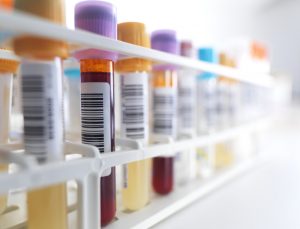The NHS is one of the UK’s most beloved institutions, but it’s also in need of some new thinking. This is especially true when it comes to technology. The first major wave of investment in artificial intelligence (AI) has seen entire industries transformed by the speed and capabilities of machine learning algorithms. In an organisation like the NHS, with incredibly complex operations and heavy daily pressures on staff, AI could do much good.
Prime Minister Theresa May has just made the point that AI has the potential to transform cancer diagnosis. Yet a recent House of Lords report cites a concerning lack of organisational preparedness for AI in the health service. Part of the problem, it suggests, is an absence of vision and proper planning to embrace digitisation and the latest solutions. However, the NHS also has a more pressing, intractable challenge that is holding it back from realising the technology’s potential.
The NHS’ data problem
While it has always been a relentless producer of data – patient, performance, clinical and administrative – the NHS has long struggled to store and use it effectively. Current procedures and IT systems struggle to integrate an immense variety of data, which can take the form of anything from online records to handwritten doctors’ notes. Indeed, 79 per cent of NHS professionals claim their current systems are incapable of delivering the high-value, integrated care they strive for.
Legacy technologies – including the persistent use of paper without digitisation – and the organisation’s size and geographical spread makes the process of sharing data between colleagues highly inefficient. When data is difficult to share, it inevitably becomes siloed, whether that means it’s trapped in one of many hundreds of databases or locked away in a filing cabinet.
Where data is inaccessible, precious insight is lost. A doctor who is seeing a new patient for the first time may be frustrated to find no detailed medical history because the patient has recently moved from another hospital. The consequences of inefficient data transfer can be even more severe.
Hospitals that lack data are prevented from making optimal, evidence-based decisions or from adopting the latest technologies. This means they cannot accurately forecast demand, collaborate on improvements to clinical pathways, or undertake other projects that would help improve personal, technical and allocative value. To improve outcomes and achieve a truly integrated, multidisciplinary system of care, data management must be top of the agenda.
Data-driven decisions
Ultimately, care needs to be delivered to meet the needs of the patient. This means making better decisions with the data available while facilitating greater integration between the systems of primary care, ambulance services, urgent care centres, community pharmacies and mental health teams. With this foundation, services can be delivered closer to the patient and a significant barrier to AI removed.
For individual hospitals, an essential first step is to ensure as much data as possible is accessible from a single centralised system. Advanced analytics can be deployed to build a clinical data warehouse to serve as an easily accessed and privacy-protected central store of data from across all operations. Using AI and analytics tools, clinicians will then be able to access and interrogate this trove of data much faster and more easily. Having it all in one place also streamlines the process of sharing data when needed.
In an environment of stretched budgets and ever-growing demand, doctors and managers can only benefit from improved insight and knowing more. Integrated, clean and consolidated data will help them to predict needs, model outcomes and measure patient value accurately.
Accelerating with AI
When the data is available, AI technologies can bring its potential uses to a whole new level. With the introduction of machine learning into NHS systems, data can be deeply and accurately mined by computers that learn based on experience. This will have an immense impact on patient outcomes and hospital operations.
An algorithm’s pattern-recognition speed and capabilities outpace those of even the most seasoned clinicians, drawing out previously unrevealed correlations and insights that inform the work of doctors. To illustrate, AI algorithms can identify correlations between the types of sutures used on specific kinds of injuries, as well as the likelihood of infection.
By developing an approach that empowers the NHS to interpret clean, up-to-date and accurate data, it can move towards a technology-driven, value-focused model of care.
This form of pattern recognition will also improve the NHS’ forecasting abilities. By processing data from past case notes, biomedical imaging and health monitors, AI can advance the use of predictive diagnostics and improve response times in patient care. It can identify and alert doctors to potential health problems at the individual patient level before an issue manifests itself, allowing clinicians to intervene much earlier. In the case of the plans recently announced by the prime minister, the government claims it will see “at least 50,000 people” each year being able to get an early diagnosis of several cancers – including prostate, ovarian, lung and bowel cancer – which it believes will save around 20,000 lives each year by 2033. In the longer term, it may prove possible to use this type of predictive analytics to forewarn of still poorly understood illnesses, such as dementia.
AI will also help to improve operations at a more logistical level. Many of the problems that dog the NHS can be attributed to poor decisions involving the allocation of resources. This can result in avoidable crises, such as overcrowding in hospitals and bed shortages during the winter when other care units have spare capacity.
This technology can be put to impressive predictive use. Hospitals could use it to give hour-by-hour predictions of expected admissions, or to analyse and model large volumes of patient data to produce more accurate predictions of patient outcomes. Doing so provides a much more accurate timeline for expected patient recovery, and thus a better idea of how many hospital beds will be needed and for how long.
By developing an approach that empowers the NHS to interpret clean, up-to-date and accurate data, it can move towards a technology-driven, value-focused model of care. In making proper use of the patient data available to it, the service can achieve a better understanding of its patients, their conditions and circumstances. This information can then serve as fuel for AI solutions, providing robust solutions to organisational challenges while delivering greater value to patients.
Recommendation: Find out more about how health care analytics can help patients and hospitals

